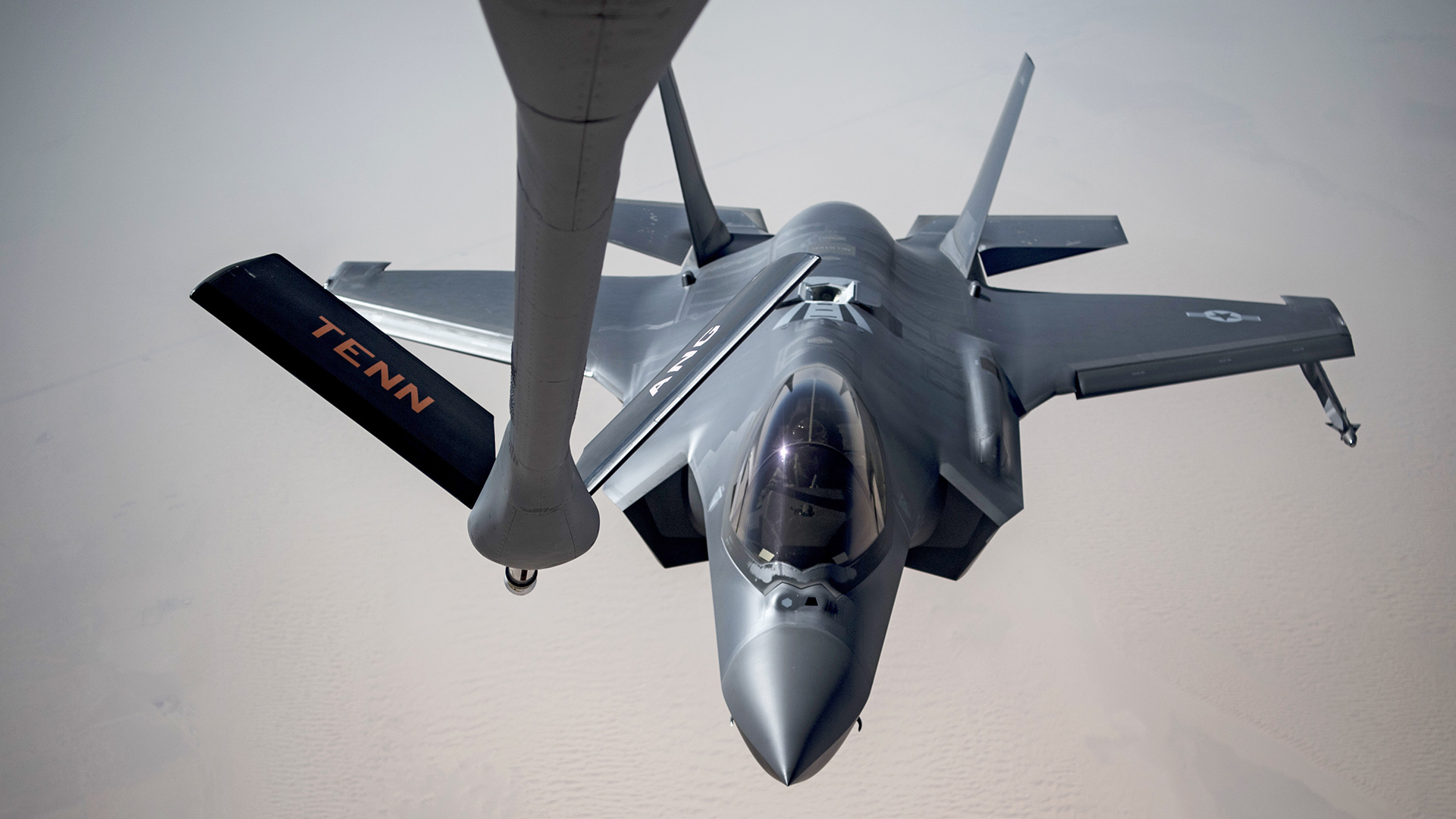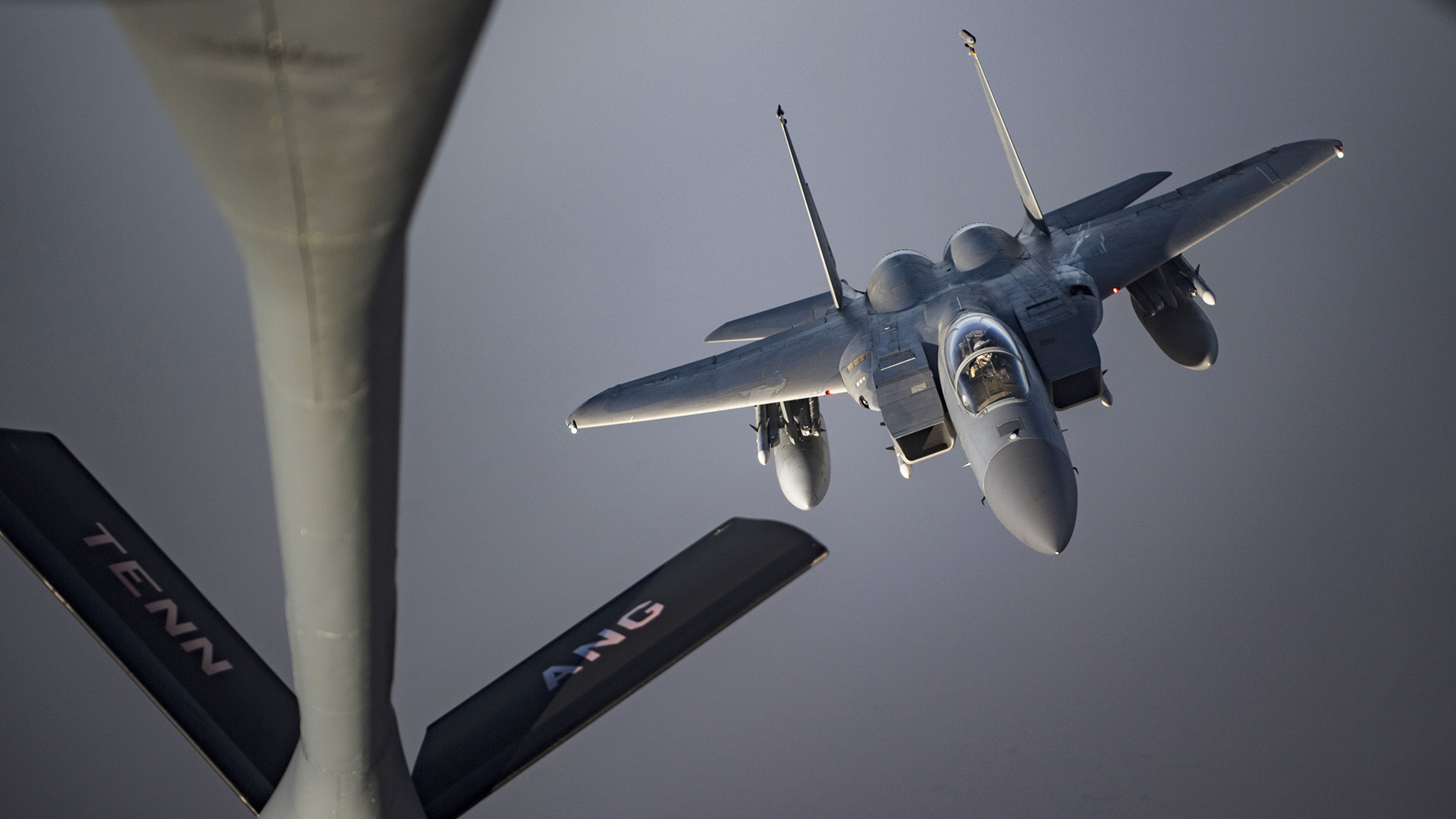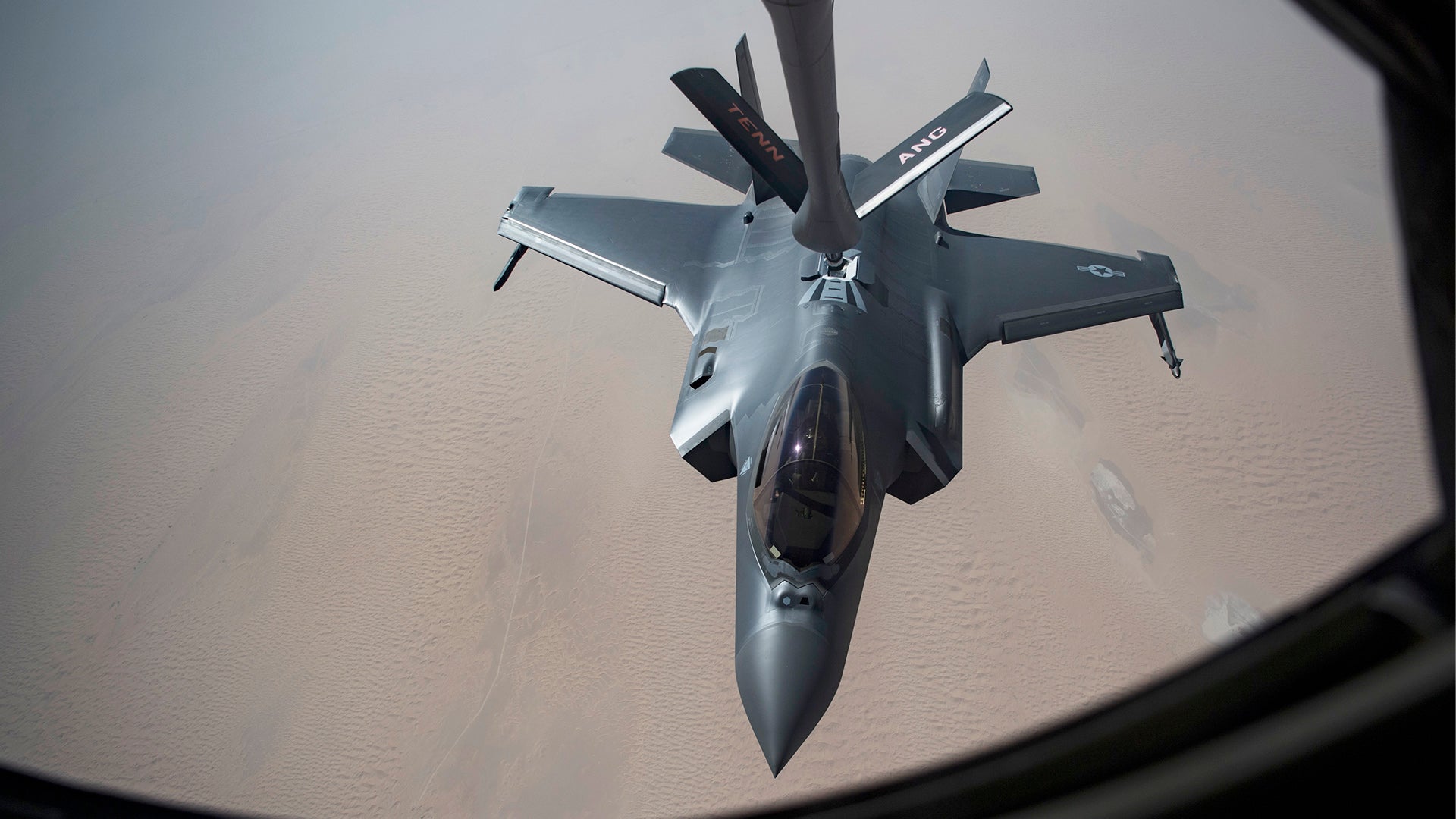The Pentagon is pumping out high-profile imagery depicting its aerial capabilities that are now in the Persian Gulf area of operations, some of which was deployed there on short notice due to the still not fully explained threat supposedly posed by Iran and its proxy forces against U.S. interest and its allies in the region. U.S. Air Force F-35As from Hill AFB in Utah deployed to Al Dhafra Air Base in the UAE weeks before the specter of a possible military engagement with Iran was raised. The historic deployment has already seen the jets execute their first combat missions, but now the USAF says they are flying ‘deterrence missions’ over and around the Persian Gulf along with F-15s and B-52s that are also forward deployed as well. But the configuration of the F-35 shown in one of the images—seen at the top of this article—is a bit puzzling for such a mission.
During their recent combat operations over Iraq, the F-35As flew with their radar reflectors attached, as well as their outer-wing missile rails with AIM-9X Sidewinders installed. You can read more about the U.S. Air Force F-35A’s first combat mission and this configuration in this past article of ours, but to put it directly, flying in non-stealthy configuration keeps the F-35’s radar signature secretive in a region with real foes that have access to powerful sensor systems. It also allows the jets to be more easily tracked and offers the ability to carry AIM-9Xs on missions, which are useful for engaging targets within visual range—something that may not be avoidable depending on the rules of engagement in the tense and dense Middle East area of operations.
Yet the photo shows the F-35A armed with a single AIM-9X, with the other rail empty. This seems quite odd for a combat air patrol over an area that is getting tenser by the moment. If the pylons and radar reflectors are fitted, why not take advantage of the jet’s external stores capability and fly with a pair of Sidewinders? It seems like a strange decision considering the circumstances.

Maybe there is a shortage of air-to-air missiles at Al Dhafra. This seems like a very strange thing to posit, but the F-15Cs that deployed last week to the region from England flew in fully loadedwith live missiles. This is not a common practice in our experience. Otherwise, it seems as if the threat can’t be that pressing if the F-35s are sortied on non-training flights with one of two external missile rails left empty and in unstealthy configuration. With that in mind, maybe just being able to signal to an aircraft that may get intercepted by an F-35 that the stealthy fighter is indeed armed is what is most important. The F-35A can carry four AIM-120 AMRAAMs concealed in its weapons bays at any given time, as well.
On the other hand, the F-15C that is also shown in the released images is bristling with a full counter-air loadout.

At first glance, another explanation could be that this was a training flight and the USAF just presented the image as something otherwise for information warfare purposes. Flying with a single AIM-9X captive training round makes perfect sense for training sorties. But we were able to brighten the image and zoom in on the missile enough to just make out its orange bands that signify it is a live round. So the idea that it is a mislabeled training flight is out.
It is possible that the powers that be deemed the mission as not risky enough to put the hours on the live missile airframes, which can cost many hundreds of thousands of dollars each. Still, this seems like an odd move in a region that supposedly could erupt in conflict at any given moment. Three separate people have mentioned to us that the F-35, in particular, puts heavy stress on the AIM-9X when flying it on its underwing hardpoints. We have no information at this time that corroborates these claims.
If the F-35’s had F-15s covering them, there really wasn’t a need to carry any missiles at all. The F-35 is an incredibly powerful electronic intelligence collection platform that can suck-up real-time data of the enemy’s electronic order of battle that would be sorely needed if a conflict were to suddenly occur. But once again, this doesn’t explain the single AIM-9X on the jet pictured. If you are going to mount the pylons, why not make the best of the limited capability offered?
In the end, this is just another tiny piece of an increasingly confusing narrative—or lack thereof—as to why exactly military tensions with Iran are rapidly building and what the Pentagon is doing about it. Still at the heart of this matter is the question of what intelligence—and of what quality—did the Trump Administration actually receive concerning looming aggressive acts ordered by Tehran. Beyond that, the question remains how much of this projection of military might is for show, or is part of a separate contrived narrative, and how much of it is a tangible requirement based on reliable intelligence and on further information that has come via investigation after the fact.
At this point in time, we have no way of accurately answering that question.
Contact the author: Tyler@thedrive.com
